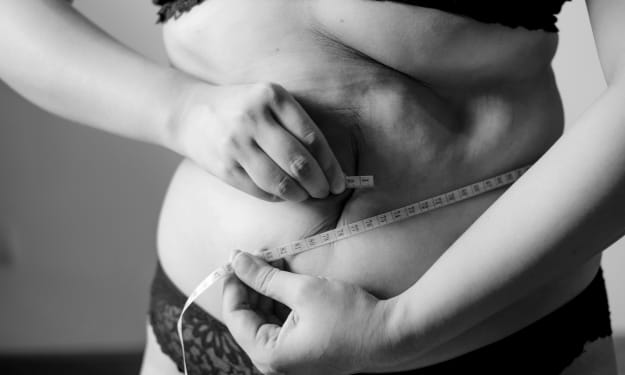Restoring Vaginal Tightness After Childbirth
What You Need to Know

Childbirth is a profound and transformative experience for any woman, bringing immense joy and fulfillment. However, it can also lead to various physical changes, including a loosening of the vaginal muscles. Many women seek ways to restore vaginal tightness postpartum without resorting to surgery. Fortunately, there are several effective non-surgical methods available that can help women regain their confidence and physical comfort.
Postpartum Changes
During childbirth, the vaginal muscles stretch to accommodate the passage of the baby. This stretching can sometimes lead to a feeling of looseness or reduced tightness. Additionally, factors such as hormonal changes, particularly the decrease in estrogen, can affect the elasticity and moisture of vaginal tissues. These changes are completely natural, but they can impact a woman’s sexual health and self-esteem.
Pelvic Floor Exercises
Pelvic floor exercises, commonly known as Kegels, are one of the most recommended and effective ways to restore vaginal tightness. These exercises involve repeatedly contracting and relaxing the muscles that support the bladder, uterus, and bowels.
How to Perform Kegels:
- Identify the right muscles by stopping urination midstream. The muscles you use for this action are your pelvic floor muscles.
- Contract these muscles and hold for 5-10 seconds.
- Relax for the same amount of time.
- Repeat 10-15 times, three times a day.
Regular practice of Kegels can strengthen the pelvic floor muscles, improve bladder control, and enhance sexual satisfaction.
Vaginal Weight Training
Vaginal weight training involves using small weights designed to be inserted into the vagina. The act of holding and moving with these weights helps to strengthen the pelvic floor muscles.
Steps for Vaginal Weight Training:
- Insert a vaginal weight while standing.
- Try to hold it in place using your pelvic muscles for a few minutes.
- Gradually increase the weight and duration as your muscles become stronger.
It's advisable to consult with a healthcare professional before starting vaginal weight training to ensure it's suitable for your body.
Yoga and Pilates
Both yoga and Pilates focus on core strength, which includes the pelvic floor muscles. Specific poses and exercises can target these muscles, promoting overall pelvic health and vaginal tightness.
Beneficial Poses and Exercises:
Bridge Pose: Lying on your back with knees bent, lift your hips towards the ceiling, engaging your pelvic floor.
Child’s Pose: Helps to relax and lengthen the pelvic floor muscles.
Pelvic Tilts: While on your back, gently rock your pelvis forward and backward.
Incorporating these exercises into your regular fitness routine can contribute to improved muscle tone and function.
Perineal Massage
Perineal massage can increase the elasticity of vaginal tissues and improve blood circulation, aiding in the recovery of vaginal tightness.
How to Perform Perineal Massage:
- Wash your hands thoroughly.
- Use a natural lubricant such as vitamin E oil or coconut oil.
- Insert your thumb or fingers into the vagina and gently massage the lower part of the vaginal wall.
- Perform this massage for about 5-10 minutes a few times a week.
Perineal massage is particularly effective when started during the later stages of pregnancy and continued postpartum.
Healthy Diet and Hydration
A balanced diet rich in vitamins, minerals, and hydration can significantly impact the health of vaginal tissues. Foods high in phytoestrogens, such as soy products, flaxseeds, and nuts, can help maintain vaginal elasticity and moisture. Staying well-hydrated is also crucial for tissue health and recovery.
Postpartum Support Groups and Education
Joining a postpartum support group can provide valuable information and emotional support. Sharing experiences and strategies with other mothers can offer encouragement and practical advice on restoring vaginal tightness and overall postpartum recovery.
Restoring vaginal tightness after childbirth is a common concern, and many non-surgical methods can help women achieve their goals. Through pelvic floor exercises, vaginal weight training, yoga, Pilates, perineal massage, and maintaining a healthy diet, women can strengthen their pelvic floor muscles and enhance their vaginal health. Embracing these practices not only aids in physical recovery but also boosts confidence and overall well-being, allowing women to fully enjoy their postpartum journey.
Surgical Vaginal Tightening
Surgical vaginal tightening, often referred to as vaginoplasty, is a procedure that many women consider to restore or enhance vaginal tightness. This surgery is particularly sought after following childbirth, significant weight loss, or as a means to address changes due to aging. Understanding the intricacies, benefits, risks, and recovery process of vaginoplasty is crucial for anyone contemplating this surgical option.
What is Vaginoplasty?
Vaginoplasty is a surgical procedure designed to tighten the vaginal muscles and surrounding tissues. It aims to repair the stretching or weakening of these muscles, which can occur due to childbirth, aging, or other factors. The goal is to restore the vaginal canal to a pre-stretched state, improving both physical sensation and aesthetic appearance.
Preoperative Consultation:
Before undergoing vaginoplasty, a thorough consultation with a board-certified plastic surgeon is essential. During this consultation, the surgeon will:
- Discuss the patient's medical history and any underlying health conditions.
- Conduct a physical examination.
- Explain the procedure, including potential risks and benefits.
- Set realistic expectations for the outcome.
Surgical Steps:
Anesthesia: The procedure typically begins with administering general anesthesia or local anesthesia with sedation.
Incision: The surgeon makes incisions in the vaginal canal, often on the posterior side (back wall of the vagina).
Tightening Muscles: The vaginal muscles are then tightened and stitched together. Excess vaginal lining may be removed.
Closure: The incisions are closed with dissolvable sutures.
The entire procedure usually takes about one to two hours, depending on the extent of the surgery.
Benefits of Vaginoplasty
Enhanced Sensation: By tightening the vaginal muscles, many women experience enhanced sexual sensation and satisfaction. This can positively impact intimate relationships and self-confidence.
Improved Aesthetics: Vaginoplasty can also improve the aesthetic appearance of the vaginal area, addressing any concerns of laxity or asymmetry.
Increased Muscle Control: Strengthening the vaginal muscles can lead to better control, which may alleviate issues such as urinary incontinence, providing both functional and psychological benefits.
Recovery Process
- Patients are usually monitored for a few hours after the surgery before being allowed to go home.
- It's common to experience swelling, bruising, and discomfort in the vaginal area.
- Rest and avoid strenuous activities for at least two weeks.
- Use prescribed pain medications and antibiotics to manage pain and prevent infection.
- Follow-up appointments with the surgeon are crucial to monitor healing.
- Full recovery can take up to six to eight weeks.
- Sexual activity and the use of tampons should be avoided until the surgeon gives clearance, typically around six weeks post-surgery.
- Gradual resumption of normal activities is advised, and any concerns during recovery should be promptly addressed with the healthcare provider.
Making an Informed Decision
Deciding to undergo vaginoplasty is highly personal and should be made after careful consideration and consultation with a qualified surgeon. It's important to:
- Ensure the surgeon is experienced and certified in performing vaginoplasty.
- Understand the realistic outcomes and potential risks.
- Consider the financial cost, as this procedure is often not covered by insurance.
Surgical vaginal tightening through vaginoplasty can offer significant benefits in terms of enhanced sensation, aesthetics, and muscle control. However, it also comes with inherent risks and a recovery period that requires patience and care. By thoroughly researching and consulting with a trusted medical professional, women can make an informed decision that aligns with their health and personal goals.
About the Creator
Nazmi Baycin
Dr. Nazmi Baycin is a board certified plastic surgeon. As the head plastic surgeon, he has performed more than 7000 surgeries. He specializes in all procedures within the field of plastic surgery in Dubai.
Enjoyed the story? Support the Creator.
Subscribe for free to receive all their stories in your feed. You could also pledge your support or give them a one-off tip, letting them know you appreciate their work.






Comments
There are no comments for this story
Be the first to respond and start the conversation.